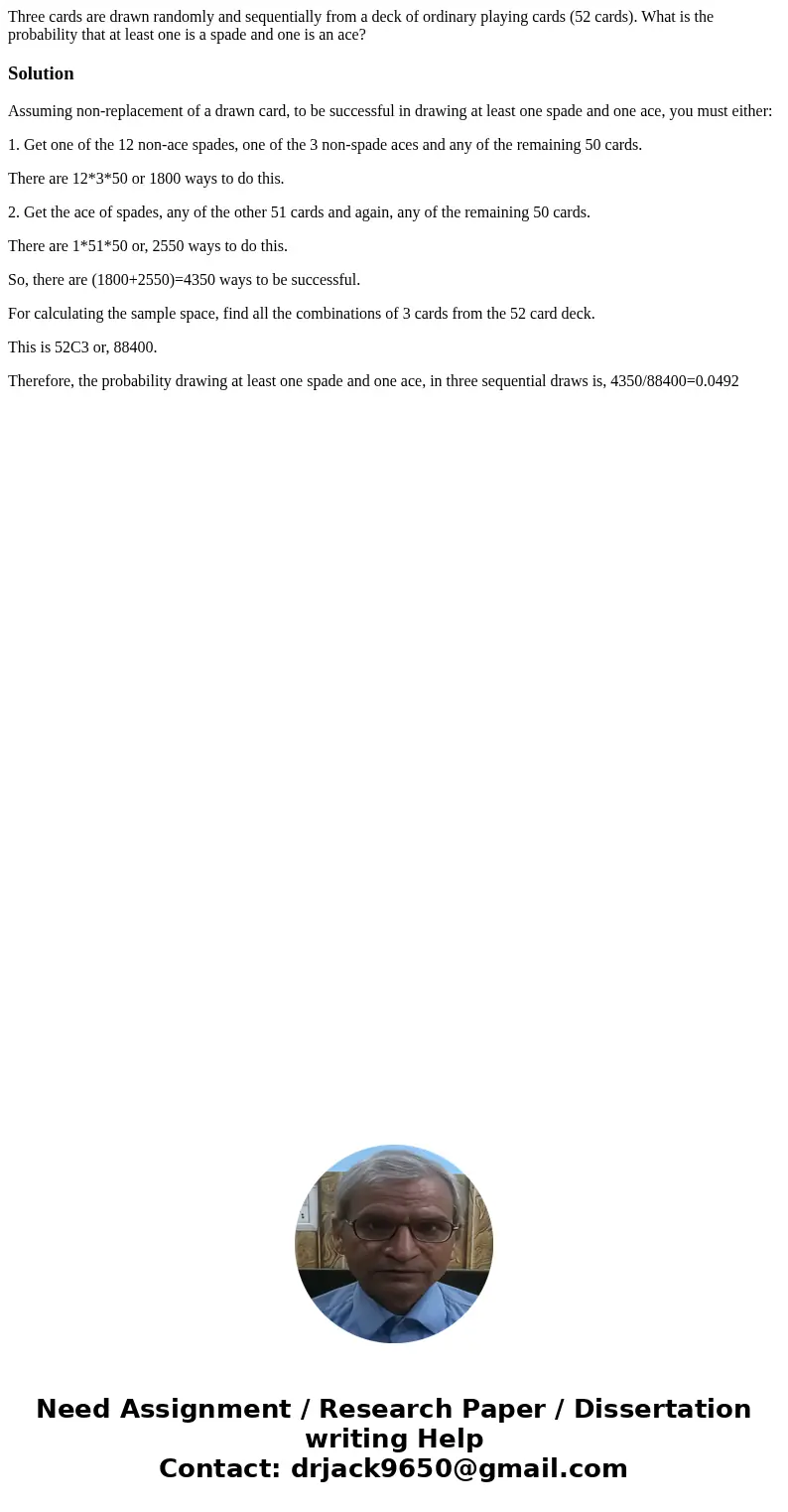Three cards are drawn randomly and sequentially from a deck
Three cards are drawn randomly and sequentially from a deck of ordinary playing cards (52 cards). What is the probability that at least one is a spade and one is an ace?
Solution
Assuming non-replacement of a drawn card, to be successful in drawing at least one spade and one ace, you must either:
1. Get one of the 12 non-ace spades, one of the 3 non-spade aces and any of the remaining 50 cards.
There are 12*3*50 or 1800 ways to do this.
2. Get the ace of spades, any of the other 51 cards and again, any of the remaining 50 cards.
There are 1*51*50 or, 2550 ways to do this.
So, there are (1800+2550)=4350 ways to be successful.
For calculating the sample space, find all the combinations of 3 cards from the 52 card deck.
This is 52C3 or, 88400.
Therefore, the probability drawing at least one spade and one ace, in three sequential draws is, 4350/88400=0.0492

 Homework Sourse
Homework Sourse